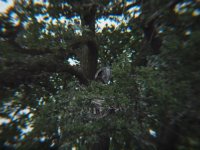Steve Norton
Member
Can anyone assist me in trying to sort out my digiscoping problems with my new camera. Just got an Olympus E600 DSLR and i'm using a Opticron scope. Brought a photo adaptor at the west mids bird fair and camera fits scope well.
Problem is with images. The outside of the shot looks out of focus and has a swirrling affect to it. I'm not really sure of the best settings to use on the camera and the main problem being the auto focus doesn't work when the lens is removed from the camera to attach it to the scope.
If anyone has any ideas how i may be able to improve my poor images please give me a shout and private message me as well would you, sorry to be a pain in the ass.
Thanks, Steve Norton......
Problem is with images. The outside of the shot looks out of focus and has a swirrling affect to it. I'm not really sure of the best settings to use on the camera and the main problem being the auto focus doesn't work when the lens is removed from the camera to attach it to the scope.
If anyone has any ideas how i may be able to improve my poor images please give me a shout and private message me as well would you, sorry to be a pain in the ass.
Thanks, Steve Norton......






